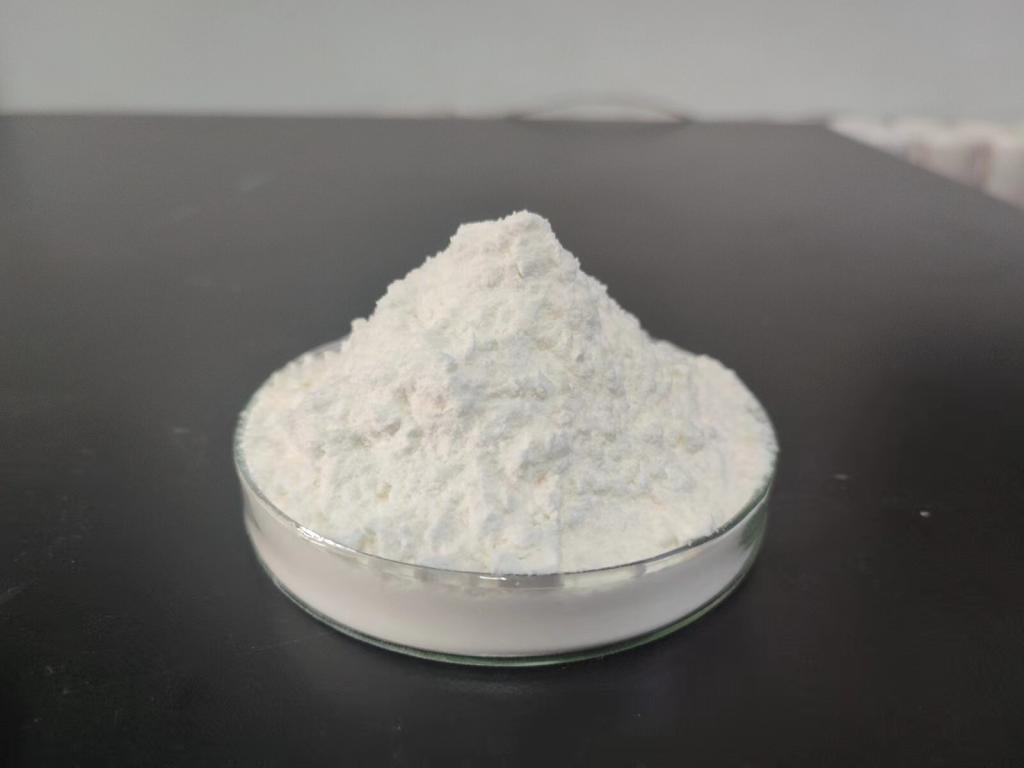Tel:+8618231198596

News
 CONTACT
CONTACT
 CONTACT
CONTACT
- Linkman:Linda Yao
- Tel: +8618231198596
- Email:linda.yao@dcpharma.cn
- Linkman:CHARLES.WANG
- Department:Overseas
- Tel: 0086 0311-85537378 0086 0311-85539701
News
ε-Polylysine Hydrochloride: A Potential Player in Controlling Post-Harvest Diseases in Fruits
TIME:2024-02-20
Challenges of Post-Harvest Diseases in Fruits:
Microbial Pathogens: Fruits are susceptible to various microbial pathogens such as fungi and bacteria, which can lead to decay and spoilage during storage and transportation.
Storage Conditions: Improper storage conditions, including temperature and humidity fluctuations, create favorable environments for the proliferation of pathogens, accelerating the development of post-harvest diseases.
Chemical Residues: The use of synthetic chemical fungicides, while effective in disease control, raises concerns about chemical residues on fruits, posing risks to human health and the environment.
Global Trade Concerns: With the increasing globalization of the fruit industry, there is a higher risk of introducing and spreading diseases across borders through infected fruits during transportation.
Understanding ε-Polylysine Hydrochloride:
ε-Polylysine hydrochloride is a water-soluble, cationic polyamide polymer composed of ε-lysine units linked by amide bonds. It is produced through the fermentation of Streptomyces albulus or related strains. Known for its broad-spectrum antimicrobial activity, ε-Polylysine hydrochloride has been widely used in the food industry as a natural preservative. Its potential application in controlling post-harvest diseases in fruits stems from its ability to inhibit the growth of various microorganisms.
Unique Properties of ε-Polylysine Hydrochloride:
Antimicrobial Spectrum: ε-Polylysine hydrochloride exhibits antimicrobial activity against a wide range of microorganisms, including bacteria, yeasts, and fungi. This broad-spectrum efficacy makes it a versatile solution for combating diverse post-harvest pathogens.
Safe and Natural: Being derived from microbial fermentation, ε-Polylysine hydrochloride is considered safe for consumption and environmentally friendly. Its natural origin aligns with the increasing consumer demand for sustainable and clean-label solutions.
Stability and Solubility: ε-Polylysine hydrochloride demonstrates stability under various pH and temperature conditions, making it suitable for application in different fruit preservation processes. Its water solubility facilitates easy incorporation into diverse formulations.
Low Toxicity: Compared to traditional chemical preservatives, ε-Polylysine hydrochloride is characterized by low toxicity, reducing concerns about potential harm to consumers and the environment.
Applications in Controlling Post-Harvest Diseases:
Surface Treatment: ε-Polylysine hydrochloride can be applied as a surface treatment on fruits, forming a protective layer that inhibits the growth of pathogens. This method is particularly effective in preventing post-harvest diseases caused by surface-contaminating microorganisms.
Coating Formulations: Incorporating ε-Polylysine hydrochloride into coating formulations enhances its adherence to fruit surfaces. These coatings provide a sustained release of the antimicrobial compound, extending its protective effect during storage and transportation.
Fumigation Alternatives: As an alternative to traditional chemical fumigants, ε-Polylysine hydrochloride can be utilized to create controlled atmospheres that inhibit the development of post-harvest pathogens without the use of harmful chemicals.
Integrated Pest Management: ε-Polylysine hydrochloride can be integrated into comprehensive pest management strategies, offering a natural and sustainable component to combat post-harvest diseases alongside other control measures.
Case Studies: ε-Polylysine Hydrochloride in Fruit Preservation:
Citrus Fruits: Citrus fruits, prone to post-harvest diseases such as citrus green mold (caused by Penicillium digitatum), have shown improved resistance when treated with ε-Polylysine hydrochloride coatings. The compound inhibits fungal growth and extends the shelf life of citrus fruits.
Apples and Pears: Apples and pears, susceptible to storage rot and fungal decay, benefit from ε-Polylysine hydrochloride-based coatings. Studies have demonstrated a reduction in disease incidence and improved overall fruit quality during extended storage periods.
Berries: Berries, known for their perishability and susceptibility to mold growth, can be effectively protected with ε-Polylysine hydrochloride coatings. The compound's antimicrobial properties contribute to maintaining the freshness of berries during storage and transportation.
Challenges and Considerations:
While ε-Polylysine hydrochloride presents promising opportunities in fruit preservation, certain challenges and considerations need attention:
Optimizing Formulations: Fine-tuning ε-Polylysine hydrochloride formulations for different fruits and storage conditions is essential to maximize its efficacy.
Regulatory Approval: Ensuring regulatory approval for the use of ε-Polylysine hydrochloride on fruits is crucial to promote its widespread adoption and acceptance in the fruit industry.
Consumer Perception: Educating consumers about the benefits and safety of ε-Polylysine hydrochloride is essential to address any potential concerns and ensure acceptance of treated fruits in the market.
Future Prospects:
Research on Combinatorial Approaches: Future research could explore the synergistic effects of combining ε-Polylysine hydrochloride with other natural compounds or innovative preservation techniques for enhanced efficacy.
Global Adoption: As awareness of ε-Polylysine hydrochloride's potential in fruit preservation grows, its adoption on a global scale could contribute to reducing post-harvest losses and promoting sustainable fruit production practices.
Diversification of Applications: Expanding the applications of ε-Polylysine hydrochloride beyond surface treatments to address internal pathogens and exploring its potential in organic farming practices are avenues for future exploration.
Conclusion:
ε-Polylysine hydrochloride stands as a promising candidate in the quest for sustainable and effective solutions to control post-harvest diseases in fruits. Its natural origin, broad-spectrum antimicrobial activity, and versatile applications position it as a potential game-changer in fruit preservation. As research and industry efforts continue to unfold, ε-Polylysine hydrochloride could play a pivotal role in reshaping the landscape of fruit post-harvest management, contributing to both economic sustainability and global food security.
- Tel:+8618231198596
- Whatsapp:18231198596
- Chat With Skype







